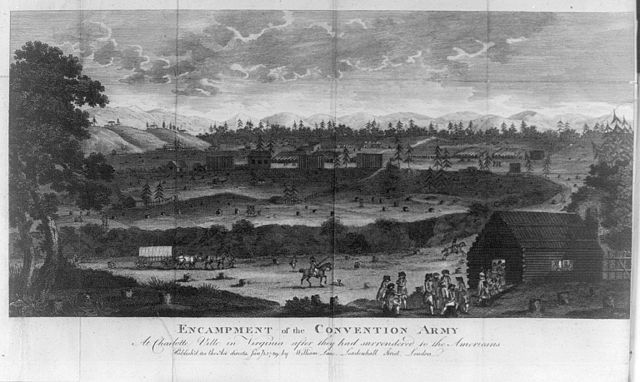The Convention Army (1777–1783) was an army of British and allied troops captured after the Battles of Saratoga in the American Revolutionary War.
A 1789 etching depicting the encampment of the Convention Army at Charlottesville, Virginia
The Battles of Saratoga marked the climax of the Saratoga campaign, giving a decisive victory to the Americans over the British in the American Revolutionary War. British General John Burgoyne led an invasion army of 7,200–8,000 men southward from Canada in the Champlain Valley, hoping to meet a similar British force marching northward from New York City and another British force marching eastward from Lake Ontario; the goal was to take Albany, New York. The southern and western forces never arrived, and Burgoyne was surrounded by American forces in upstate New York 15 miles (24 km) short of his goal. He fought two battles which took place 18 days apart on the same ground 9 miles (14 km) south of Saratoga, New York. He gained a victory in the first battle despite being outnumbered, but lost the second battle after the Americans returned with an even larger force.

Surrender of General Burgoyne, an 1822 portrait by John Trumbull depicting John Burgoyne, a British Army general, surrendering to General Horatio Gates, who refused to take his sword. The painting presently hangs in the United States Capitol Rotunda.
General Horatio Gates, portrait by Gilbert Stuart
General John Burgoyne by Sir Joshua Reynolds
The slaying of Jane McCrae by Native Americans under Burgoyne's command was widely published in newspapers throughout the colonies. This led to a massive turnout of colonial militia, outnumbering Burgoyne's army by two to one.





